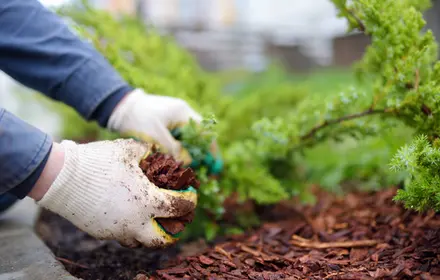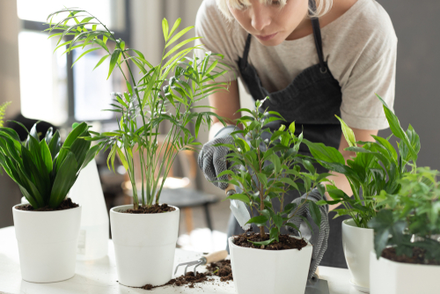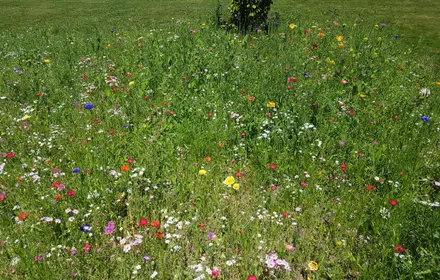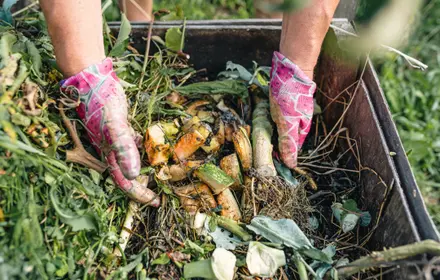Hot tips for hot days: mulching

When the summer sun is blazing and the days stretch long and dry, your garden feels it just as much as you do. As Canadian gardeners know, intense heatwaves and unpredictable rain patterns can put a lot of stress on plants — especially during peak growing season. But there’s one simple and highly effective way to protect your garden: mulch.
Whether you’re growing vegetables, herbs, perennials, or pollinator-friendly flowers, applying organic mulch is a smart, natural solution to help your plants thrive in hot weather. Here’s why mulching is a must-do for your garden this summer, plus how to choose the right mulch and apply it properly.
Why Mulch Matters in Summer Heat
Mulch acts like a natural blanket for your garden beds. When applied around your plants, it helps regulate soil temperature, reduces evaporation, and keeps roots protected. Here’s how mulch makes a difference during hot spells:
- Locks in moisture: Bare soil dries out quickly under direct sun. Mulch significantly slows down water evaporation, meaning you won’t have to water as often — a major bonus during drought conditions or watering restrictions.
- Keeps roots cool: Just as we need shade in summer, so do your plants. Mulch shields the soil from the harsh rays of the sun, maintaining a stable, cooler environment for roots. This helps reduce heat stress and supports healthy plant growth.
- Suppresses weeds: Mulch blocks light from reaching weed seeds, making it harder for them to sprout. Fewer weeds mean your plants don’t have to compete for water or nutrients.
- Improves soil health: Organic mulches (like wood chips, shredded bark, straw, or compost) break down over time and enrich your soil with valuable nutrients and beneficial microbes.

Choosing the Right Mulch
There’s no one-size-fits-all mulch, but organic options are especially good for edible and ornamental gardens alike. Some top choices include:
- Shredded bark or wood chips: Ideal for flower beds, trees, and shrubs. These break down slowly and look tidy in landscaping.
- Straw: A favourite for vegetable gardens, especially around tomatoes, cucumbers, and melons. Just make sure it's clean and weed-free.
- Compost: Doubles as a mulch and a nutrient boost. Use it in veggie beds and borders where plants need an extra feeding.
- Grass clippings or shredded leaves: Readily available and eco-friendly. Use thin layers to prevent matting.
Pro tip: Avoid dyed or synthetic mulches in edible gardens. Stick with natural, untreated materials that improve your soil over time.
How to Mulch Like a Pro
To get the most out of mulching, follow these simple steps:
- Water first: Make sure your soil is moist before you lay down mulch. This traps the moisture in.
- Weed the area: Remove existing weeds to give your plants a head start.
- Apply evenly: Spread mulch in a layer about 5–8 cm (2–3 inches) thick. Avoid piling it against plant stems, which can lead to rot or pests.
- Top up as needed: Organic mulches break down naturally. Refresh your mulch layer every few months or at the beginning of each growing season.

Where to Find Quality Organic Mulch
Support your local growers and garden centres by picking up mulch from a trusted nearby source. Locally available mulch is often better suited to your region’s climate and soil conditions. Plus, when you buy local, you reduce the carbon footprint associated with transporting gardening materials.
Many Canadian garden centres carry a wide range of organic mulches — from bagged compost to bulk bark — and offer advice tailored to your zone and plants.
Final Thought: Don’t Let the Heat Win
A little mulch goes a long way in keeping your garden healthy, productive, and beautiful during summer’s hottest days. It’s a low-effort, high-impact gardening practice that conserves water, protects your plants, and boosts soil health all in one go.
So before the next heatwave hits, give your garden a cool gift: mulch those beds!



